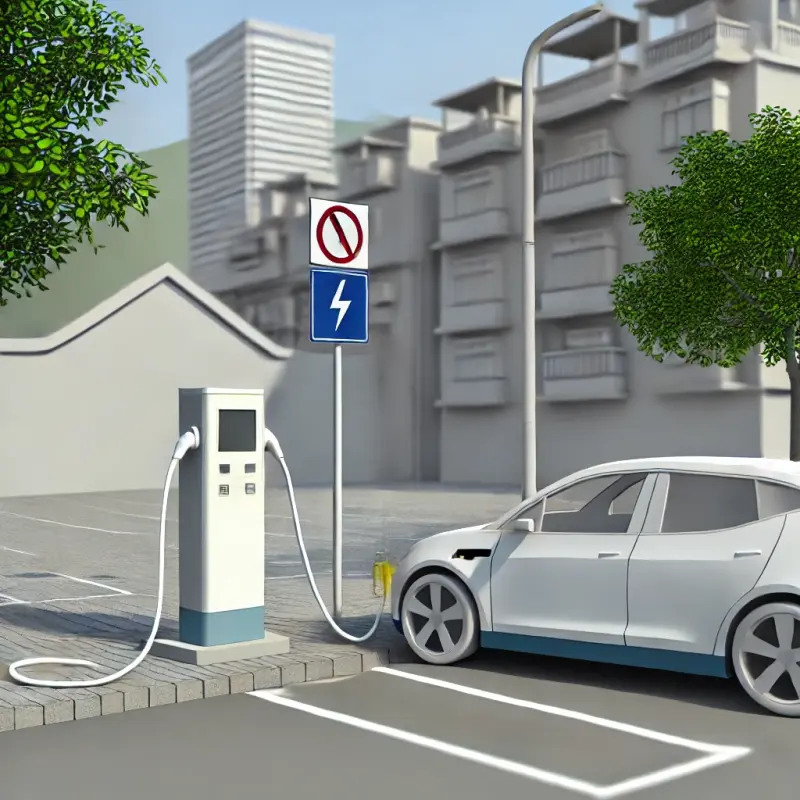Predictions for the Autonomous Electric Vehicle Industry: How New Technologies Will Transform Urban Transportation

The rise of autonomous electric vehicles (EVs) represents one of the most significant shifts in modern transportation. Combining the benefits of electric propulsion with self-driving capabilities, these vehicles promise to reshape urban landscapes, reduce emissions, and improve the efficiency of city mobility. This article explores how emerging technologies in the autonomous EV industry are set to transform urban transportation and what the future may hold for this rapidly advancing sector.
The Current State of Autonomous Electric Vehicles
Autonomous EVs are already making headway, with major companies like Tesla, Waymo, and General Motors investing heavily in self-driving technology. Current models often feature advanced driver-assistance systems (ADAS) that enable partial automation, such as lane-keeping assistance and adaptive cruise control. However, the industry is on the verge of moving beyond these capabilities to fully autonomous vehicles that require no human intervention.
Key Technologies Driving the Transformation
-
Advanced Sensor Systems Autonomous vehicles rely on a combination of sensors, such as LiDAR (Light Detection and Ranging), radar, and high-resolution cameras, to navigate safely. LiDAR provides precise distance measurements and creates 3D maps of the environment, while cameras offer detailed visual data, and radar systems detect objects in varying weather conditions. The integration of these sensors allows vehicles to make real-time decisions that ensure passenger and pedestrian safety.
-
Artificial Intelligence and Machine Learning AI and machine learning are crucial for processing the massive amounts of data gathered by an autonomous vehicle’s sensors. Algorithms analyze patterns, predict traffic behavior, and optimize routes to enhance the overall driving experience. Continuous learning enables these systems to adapt and improve over time, making autonomous EVs safer and more efficient.
-
Battery Technology Advancements The development of more efficient batteries with higher energy densities is essential for extending the range of electric vehicles. Innovations like solid-state batteries promise greater energy capacity, faster charging times, and improved safety compared to current lithium-ion batteries. These advancements will play a critical role in making electric transportation more practical and widespread.
-
Vehicle-to-Everything (V2X) Communication V2X communication technology allows vehicles to communicate with each other, infrastructure, and other road users. This connectivity can reduce traffic congestion, improve response times in emergencies, and enhance the overall flow of urban transportation. For example, traffic lights integrated with V2X technology can signal upcoming changes to nearby autonomous vehicles, allowing them to adjust speed and avoid abrupt stops.
How Autonomous Electric Vehicles Will Change Urban Transportation
1. Reduced Traffic Congestion Autonomous EVs can optimize traffic flow by communicating with one another and making split-second decisions to minimize delays. This level of coordination reduces bottlenecks and increases the efficiency of road use, ultimately shortening commute times.
2. Lower Emissions and Improved Air Quality Electric vehicles produce zero tailpipe emissions, and as more autonomous EVs enter the market, cities can expect significant reductions in air pollution. This shift supports global efforts to combat climate change and improve public health.
3. Enhanced Safety Human error is responsible for the majority of traffic accidents. Autonomous vehicles, with their precise sensors and AI-driven decision-making, are expected to significantly reduce accident rates. Features like real-time obstacle detection and predictive analytics help prevent collisions and enhance road safety.
4. Increased Accessibility Autonomous EVs can provide mobility solutions for individuals who cannot drive due to age, disability, or other factors. This opens up new opportunities for greater independence and improved quality of life for these populations.
Challenges and Considerations
Despite the potential benefits, several challenges remain:
-
Regulatory Hurdles: Governments will need to update transportation laws and safety standards to accommodate autonomous vehicles. The process of creating a unified regulatory framework can be time-consuming and complex.
-
Ethical and Safety Concerns: AI decision-making in critical situations, such as potential collision scenarios, raises ethical questions that must be addressed to gain public trust.
-
Infrastructure Upgrades: Urban areas may require significant investments to support V2X communication and charging infrastructure for electric vehicles.
-
Cybersecurity Risks: Autonomous vehicles rely heavily on software and connectivity, making them vulnerable to hacking and data breaches. Ensuring robust cybersecurity measures is essential for widespread adoption.
The Road Ahead
The development of autonomous electric vehicles is poised to bring a new era of transportation characterized by efficiency, sustainability, and accessibility. Continued investment in technology and infrastructure, combined with thoughtful regulatory approaches, will be crucial to achieving this vision. As these innovations progress, urban environments are set to evolve, leading to smarter, cleaner, and more connected cities.
Artykuły
Zapisz się do naszego newslettera, aby najnowsze i najciekawsze treści trafiały prosto do Twojej skrzynki mailowej!